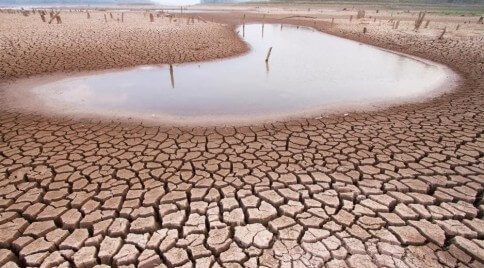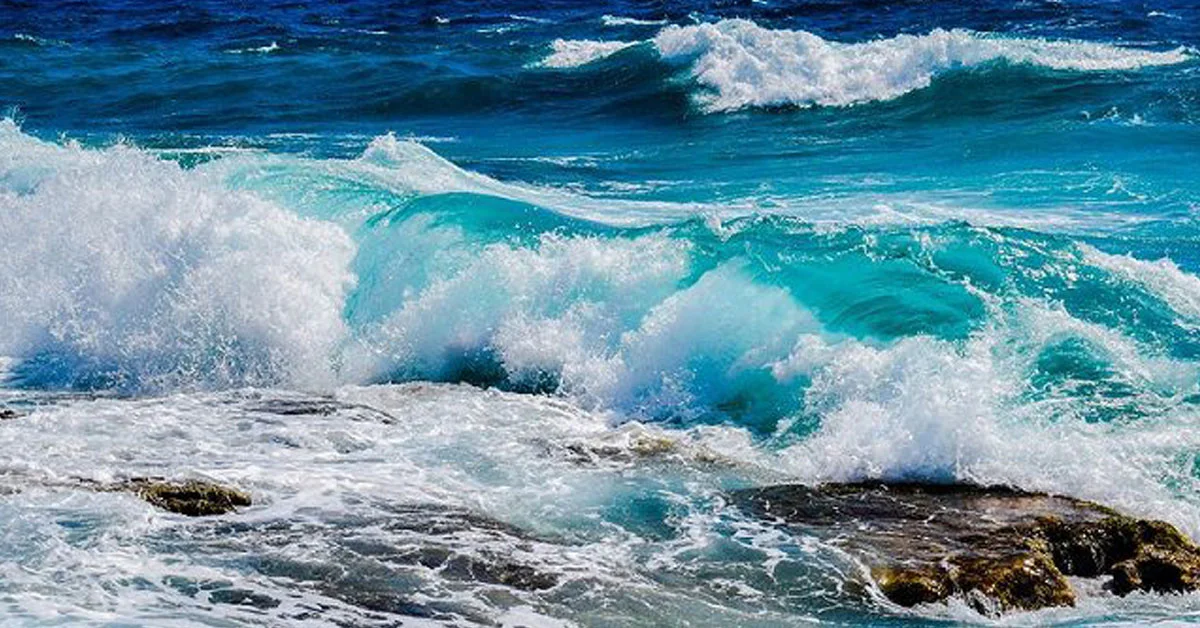Effects of climate change will be felt through water being the primary medium. Changes in atmospheric temperature and radiation balance significantly impact the closely interlinked hydrological cycle. The overall increase in global average air and ocean temperature, melting of ice and snow, and rise of sea levels are all unequivocal impacts of climate change. An overall negative impact of climate change on water resources is expected to be observed around the globe. However, intensity and characteristics of impacts will vary area wise.

Challenges
Some regions, already facing increased water demands, are expected to experience severe water shortages. On the other hand, highly populated coastal regions are at risk of rising sea levels that may threaten the livelihoods of many. In addition to this, the likelihood of floods and droughts is expected to increase all over the world. Increased occurrences of floods in some regions threaten to destroy water points and sanitation facilities. This in turn would increase the overall economic cost while decreasing crop yield, leading to an increased risk of poverty and hunger.
Changes in water availability will also have direct impacts on food security and health care. There have already been observed impacts on refugee dynamics and political instability. Hence, it is important to quantify the impacts of climate change on water resources with high spatial and temporal resolution in order to ensure long-term planning of a country’s water resources. A critical climate change strategy for the years ahead is the safe access to sustainable water sources and sanitation services.
Impact of climate change on water scarcity and quality; a global assessment
More than one third of the world’s population is already living in water-stressed regions. About 1.6-2.4 million population lives in areas that are observing water scarce water sheds. By the year 2040, one in four of world’s children under the age of 18 (around 6 million) will be living in regions experiencing extreme water stress. According to the range of 21 global climate models (GCMs), up to 3.1 billion people will be exposed to water scarcity due to climate change by the year 2050.
According to the climate change patterns, majority of the world will have increased exposure to water scarcity. Climate change will likely decrease the natural storage capacity from melting snowcaps and glaciers. In this way, water availability will decrease for more than one sixth of world’s population that lives in glacier or snow melt fed river basins that includes main areas of Western US, China, Pakistan and India. Due to the changes in precipitation patterns and intensity triggered by climate change, water scarcity will increase especially in sub-tropics and mid-latitudes regions. This could also result in higher drops of groundwater table.
Furthermore, vulnerability of ecosystems will increase due to changes in temperature, changes in occurrence and intensity of precipitation, prolonged droughts, and frequent weather events. This will in turn decrease the ability of natural systems to create buffers for flooding and filter water. Current water distribution and treatment systems including hydropower, drainage and irrigation and structural flood defenses are not capable enough to deal with sea level rise, extreme weather events and flooding due to climate change.
Declining water quality is another acute global problem especially in developing countries having increased agricultural and industrial activities without proper wastewater treatment facilities. Around 900 million people worldwide lack access to safe drinking water mainly due to increasing water demand coupled with inadequate water sanitation facilities. Climate change will likely pollute coastal surface and groundwater as rising sea levels will result in intrusion of saltwater into deltas, rivers and aquifers.
In addition to this, climate change will also cause increased occurrences of extreme precipitation and flooding which will increase the mobilization of contaminants and pathogens. It is estimated that risk of diarrhea will be 10 percent higher in some countries due to climate change by the year 2030. Water supplies will further be contaminated due to algal and bacterial blooms that thrive in increased temperatures.
Climate change and Pakistan
Pakistan is a country that has a variety of climatic zones. The northern mountain ranges are extremely cold in winter and have pleasant summer months from April to September. The Indus valley plain are extremely hot in summer and cold in winter. Coastal areas in the South have temperate climate. Rainfall is generally low with an average value of 76 cm/annum. Rainfall is monsoonal in origin and usually fall in the later part of summers. With respect to Pakistan, major concerns of climate change include increased water stress, decreased capacity of reservoirs, impacts of receding Himalayan glaciers on River Indus, increased variation in monsoons, reduced hydropower during drought periods, and extreme weather events of floods, cyclones, storm surges and droughts.
Other indirect impacts of climate change include increase in food security due to decrease in livestock production and crop yields, loss of biodiversity, prevalence of pests and weeds, degradation of ecosystems as well as shifting of some biomes towards north. In addition to this, higher temperatures are associated with rising sea levels that might threaten the coastal areas including Karachi, Badin and Thatta.
Climate change mitigation and water resource management
The present water management strategies are not strong enough to deal with the impacts of climate change on water resources, agriculture, health, floods, aquatic systems and energy resources. Current water management practices fail to cope with present climate variability resulting in larger drought and flood damages. In order to ensure sustainable water supply during normal conditions and drought, integrated demand and supply side strategies need to be incorporated into climate change adaptation options.
Demand side strategies include economic incentives for water-use improvement strategies such as water pricing and metering, development of water markets and implementation of virtual water trade. Whereas, supply side strategies include increase in water storage capacity, water transfers and abstraction from water courses. In order to ensure integrated water resources management achieves adaptation measures across environmental, socio-economic and administrative systems, integrated approaches should be applied at appropriate scales.
Many other policy areas including nature conservation, food security, health, energy are impacted by water resource management. Mitigation measures can have negative impacts as well in case of improper design, non- sustainable location and management of projects. For example, bio-crops and afforestation/reforestation activities require high water demands. Therefore, there is a need for devising adaptation strategies while keeping the context of development, environment, and health policies in mind.
There are several gaps in data access and knowledge with respect to research needs and observations related to climate change and water resources management. In addition to this, water impacts related information regarding climate change including aquatic ecosystems, groundwater and water quality is inadequate.
For improved decision making, there is a need for enhancement of modelling of climate change associated with hydrological cycle at relevant scale. Projected hydrological changes with related uncertainties should be incorporated in risk management practices and adaptation procedures. In order to ensure adaptation to long-term climate change impacts, there should be incorporation of climate change variability information with current water management system. Factors such as population growth and damage potential should always be kept in focus while devising water management strategies as they would aggravate problems in the future.
Water Care Services is committed to guaranteeing access to clean and secure freshwater through our extensive water treatment facilities.

